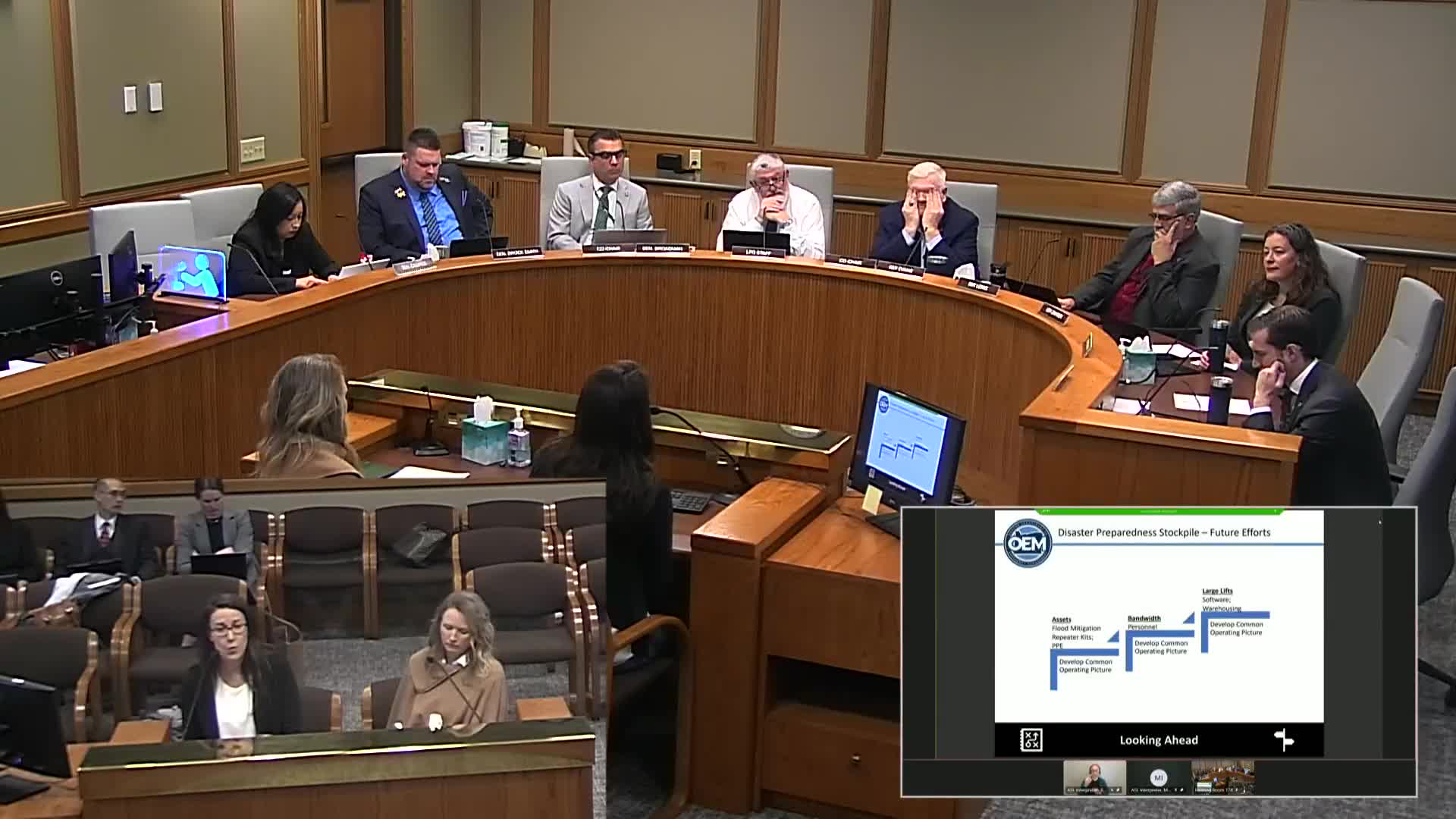Oregon explores GIS system for effective disaster response and stockpile management
April 29, 2025 | Public Safety, Ways and Means, Joint, Committees, Legislative, Oregon
This article was created by AI summarizing key points discussed. AI makes mistakes, so for full details and context, please refer to the video of the full meeting. Please report any errors so we can fix them. Report an error »

In a recent meeting of the Joint Committee on Ways and Means Subcommittee on Public Safety, Oregon officials delved into the critical need for a streamlined emergency response system. As discussions unfolded, the focus centered on enhancing the state's disaster preparedness through better coordination and resource management.
Amidst the backdrop of potential crises, officials emphasized the importance of understanding the logistics behind emergency supplies. Questions arose about the availability and deployment of essential resources, such as morgue trailers. Key considerations included the setup requirements, fuel types, and transportation logistics necessary for effective utilization. The conversation highlighted a pressing need for a centralized Geographic Information System (GIS) to track these resources, ensuring that they are readily accessible during emergencies.
The proposed system aims to create a "common operating picture," which would not only facilitate efficient resource allocation but also help identify future procurement needs. By integrating various software systems used by local partners, Oregon could enhance its disaster response capabilities, avoiding duplication of efforts and fostering collaboration across counties.
As the meeting progressed, the dialogue shifted to the communication chain between stockpiled resources and local first responders. Officials acknowledged that while processes are still developing, establishing clear agreements with partners is vital for effective resource management. The goal is to make emergency supplies not only trackable but also deployable, ensuring that they can be rehabilitated and returned to service swiftly after use.
In conclusion, the discussions underscored Oregon's commitment to becoming a resilient and responsive state in the face of disasters. By investing in a cohesive system for resource management and communication, officials aim to enhance the state's preparedness for any "gray sky days" that may lie ahead.
Amidst the backdrop of potential crises, officials emphasized the importance of understanding the logistics behind emergency supplies. Questions arose about the availability and deployment of essential resources, such as morgue trailers. Key considerations included the setup requirements, fuel types, and transportation logistics necessary for effective utilization. The conversation highlighted a pressing need for a centralized Geographic Information System (GIS) to track these resources, ensuring that they are readily accessible during emergencies.
The proposed system aims to create a "common operating picture," which would not only facilitate efficient resource allocation but also help identify future procurement needs. By integrating various software systems used by local partners, Oregon could enhance its disaster response capabilities, avoiding duplication of efforts and fostering collaboration across counties.
As the meeting progressed, the dialogue shifted to the communication chain between stockpiled resources and local first responders. Officials acknowledged that while processes are still developing, establishing clear agreements with partners is vital for effective resource management. The goal is to make emergency supplies not only trackable but also deployable, ensuring that they can be rehabilitated and returned to service swiftly after use.
In conclusion, the discussions underscored Oregon's commitment to becoming a resilient and responsive state in the face of disasters. By investing in a cohesive system for resource management and communication, officials aim to enhance the state's preparedness for any "gray sky days" that may lie ahead.
View full meeting
This article is based on a recent meeting—watch the full video and explore the complete transcript for deeper insights into the discussion.
View full meeting
